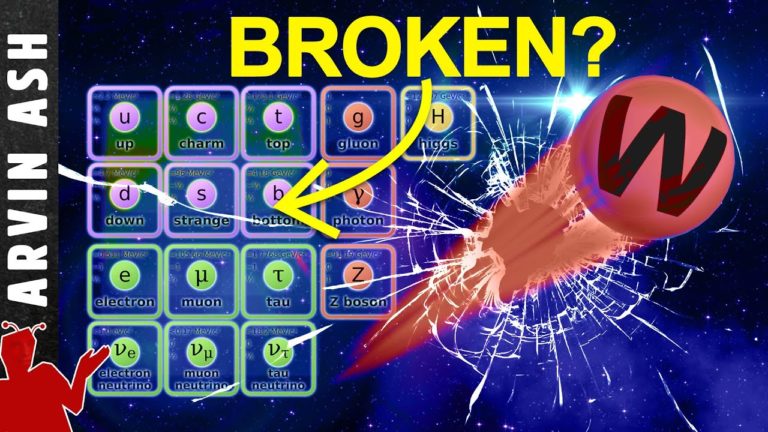Did the W Boson Just Break Physics? The Mass Anomaly
In April 2022, a team at Fermilab announced that the W-boson was measured to a new level of 7 sigma precision- 80.4335 giga electron volts (GeV) plus or minus 0.0094 GeV. However, this was not what is predicted by the the standard model of particle physics, which is 80.357 plus or minus 0.006 GeV.
Although this is only a 0.1 GeV, or a 0.3% difference, it is a big deal because it is 7 sigma off the prediction. Anything over 5 sigma is considered a new discovery.
The W boson along with the Z-boson mediates the weak force, which is one of 3 fundamental forces described by the standard model. It’s a rather heavy particle being about 80 times the mass of the proton which has a mass of about 1 GeV. This boson is behind the decay of neutrons to protons, and protons to neutrons. This process is important for the stability of large atoms, and is essential to how the sun works.
The problem is that the Fermilab result is not compatible with the standard model, which is considered our best understanding of how the universe works, and which up until now has been very accurate in making predictions.
The electroweak theory unites two fundamental forces, the weak nuclear force and electromagnetism. It tells us how these two forces arise from a single unified force, and it tells us how this force works. The Higgs field plays a critical role in making electroweak theory work, because it is responsible for giving mass to the bosons which carry the weak force. Those bosons are the W and Z bosons. The Higgs boson is an excitation in the Higgs field.
The weak force interacts with all the matter particles of the standard model. So any modification to the standard model based on new findings, would affect the parameters of electroweak theory. In fact if anything is wrong with the standard model, it will likely be found in the electroweak part of the standard model.
This theory specifies a relationship between the Z and W boson. The theory doesn’t exactly state what the mass of these particles should be, but it gives a relationship which must be respected. That relationship is that the ratio of the mass of the W bozon and Z boson is the cosine of the Weinberg angle. The new result appears to violate this prediction from electroweak theory.
When the W mass was initially calculated based on the standard model, the mass was too low. The issue is that the mass of all massive particles is affected by the mass of other particles. These are called quantum corrections.
So for example, the W boson is affected by quantum corrections from its interaction with other particles, like the top quark and the Higgs boson.
The reason that the mass of one particle affected by the mass of other particles is because at the quantum level, all particles are excitations in fields. This is the basis of quantum field theory. The magnitude of these excitations in the field is what we perceive as mass. And any given field affects other fields.
And over decades of W-boson mass measurements, they have all been within the standard model prediction after taking the error bar or uncertainty into account…until now. This new result has an unprecedented low combined uncertainty, so in this case the statistical uncertainties cannot make up for the deviation.
So, what does this mean? There are three possible explanations:
1. The math is wrong.
2. The experiment or analysis is flawed.
3. There is some new unknown physics that affects the mass.
Option 1 is unlikely. Option 2 is more likely. But if no one finds a mistake in the experiment, then option 3 will likely be correct. This would mean that there is some new physics that is missing from the standard model.
New measurements from CERN could help us determine whether the result is correct or wrong, depending on whether they recreate the same result.
It’s possible that the mass of the W boson is supposed to be heavier, but there is a problem with our understanding of the top quark, Higgs, or Z boson, since they also affect the mass of W. It could also be that there are some further quantum corrections such as from an unknown dark matter particle that we are not taking into account.
Do not forget to share your opinion with us to provide you with the best posts !




0 Comments